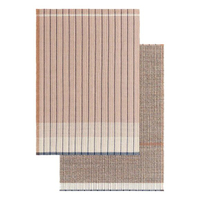How do I make the most of a small living room? 10 ways to put every square inch to work in a tiny space
Make the most of a small living room's limited area with these clever ideas that make your space work harder
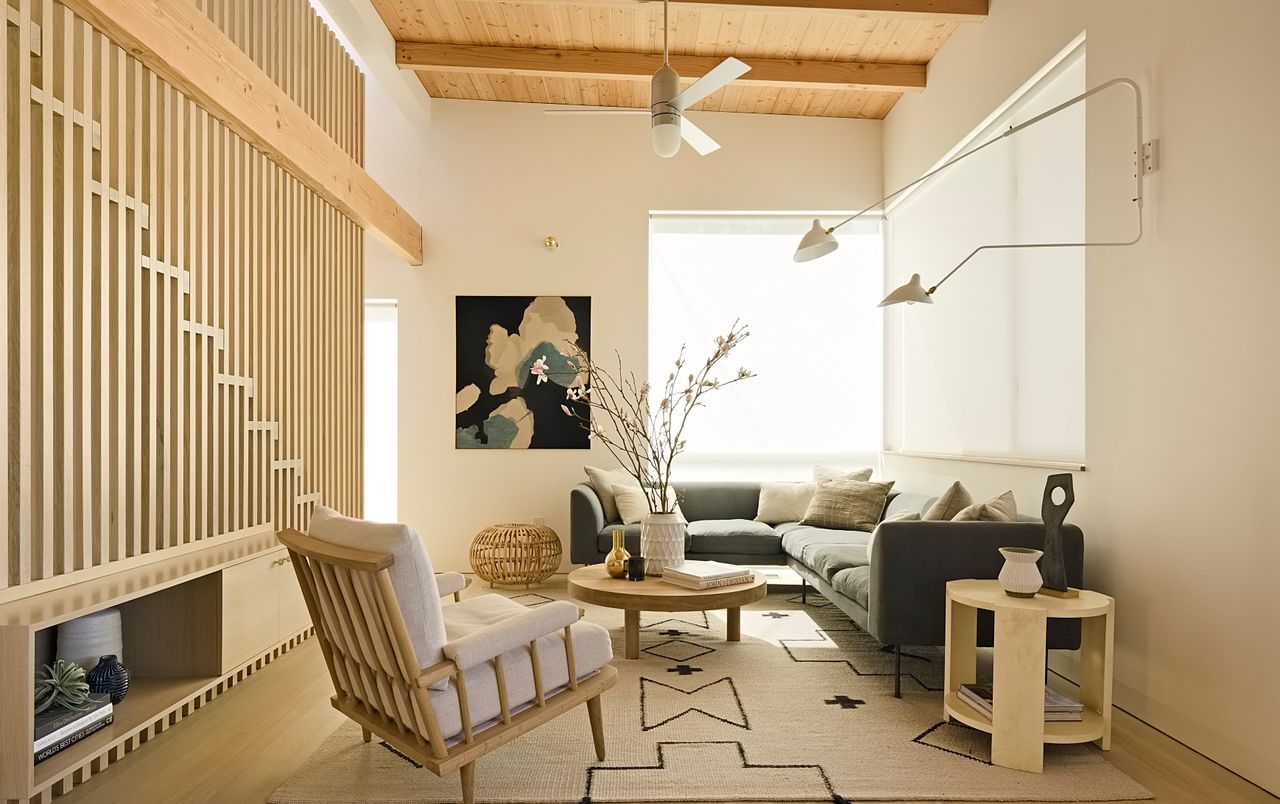

To make the most of a small living room, the first step is to view the space as somewhere filled with opportunities, rather than problems. After all, the most genius ideas originate from the tightest of spaces – limitations breed creativity. A small living room allows you, even encourages you, to experiment with out-of-the-box design techniques. After all, what have you got to lose?
To help you extract the most function and even style from a petite space, we spoke to top designers from the world who had ideas that could fill a book. Take help from these building blocks, and do up your small living room in the most ideal way possible. Once you get it right, everything else should be gravy.
10 ways to make the most of a small living room
Before you start thinking of fresh, new ways to add more functionality to your space, first remember to declutter the room. The foundation of a cozy living room, of any size is that it is one that instantly puts you at ease and calms you down. The key to that is to reduce the visual clutter in the space, making sure it is pared back and well-curated.
1. Choose multipurpose furniture to make the room more functional
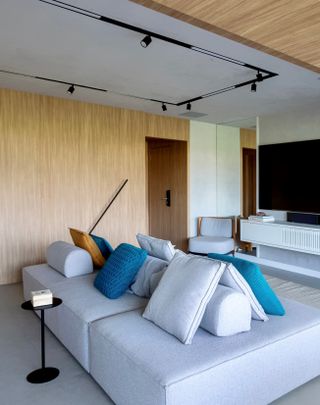
Every element needs to work hard for a tiny room to earn its place in it. When it comes to small living room furniture, it's best to go multipurpose. While you can't do without a sofa, how about one that works more like a lounger, without a hardback, which can be used for seating on either side of the room? If your small living room has a TV or a fireplace, instead of adding more chairs, simply sit on the side facing the TV or the fire. One piece that rules it all!
'The island sofa is a strong trend in the decoration of integrated environments,' says Camila Fleck, founder of ARQUITETURA Camila Fleck. 'This is because, in addition to adding beauty and comfort, the piece is also responsible for optimizing space, bringing fluidity to the decor, and providing a subtle connection between the rooms. You can turn the sofa into a bed to lie down on, while watching TV or can position it to sit more conversationally.'
'The cushions are positioned to allow for maximum comfort when lounging,' says Camila. 'The back cushion is designed to cradle the back and neck while the seat cushion is designed to provide support while allowing for a slight recline. The armrests also provide support when lounging.'
2. Create hidden functions


Another way to maximize space in a small apartment living room is to convert the entire space into one with boosted functions. Not just a single multipurpose furniture, consider adding hidden units within the walls or ceiling to add pop-out spaces that make the room more than just a place to socialize.
'In this living room, two sliding panels are designed to conceal a fold-down bed, and the other to conceal a kitchen,' says Elizabeth Demetriades, co-founder at Demetriades+Walker. 'The panels can also be stacked at either location.'
3. Embrace the power of the rug
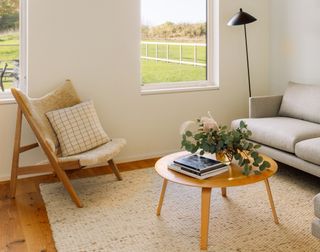
Usually, home owners try to keep a clean, non-cluttered small living room decorating scheme to prevent the space from looking too cluttered and closed in. But in doing so, sometimes the room can feel too stark or devoid of softness and coziness. In that case, bringing in a rug can be the best bet.
It is a light element that doesn't take up too much eye-level space and adds a textural charm to the room. Also, a rug is a great way to inject color if you want to keep your walls and ceiling white and non-busy.
'The best rugs to use in a small living room would either be tonally similar to the color of the wood floor, or almost wall to wall in an expanding light color,' says interior designer Julia Haney Montanez. 'Alternatively, you could also get a gorgeous antique rug and turn the room into a jewel box. My favorite rug for an expansive, tonal look is Dunes by Nordic Knots. I love how chunky the texture is. I use it the most often in the Sand Mix colorway.
Choose this reversible rug made in 100% virgin wool on one side, and linen on the other, and add texture, warmth, and tactility to your living room.
4. Slim down furniture
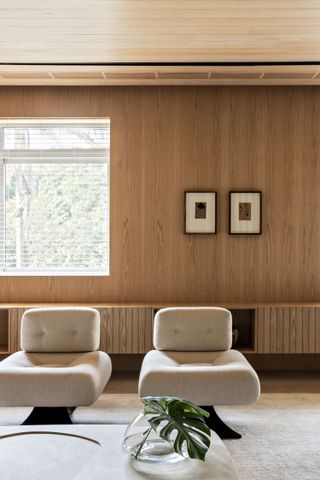
'Small spaces are all about scale, so think compact instead of puffy arms, or super deep seats,' says Jane Lockhart, founder of Jane Lockhart Design. 'Be sure to measure your room so you know actual sizes, without having to guess. When shopping online or in person, it's important to stick to those sizes even if you see something bigger and better. If you are in a condo, consider condo-sized furniture as it's made to be smaller and for tight spaces. If you need more guidance for the right furniture pieces, there are lots of apps and tools online where you can add your space's dimensions and see how pieces fit. Alternatively, some stores offer this service for free if you agree to purchase from them.'
If you're wondering how to make a small living room look bigger, sleek, low-impact, and clean pieces are a great way to go. These keep the room's visuals light and breezy and offer plenty of circulation area too in the room. Want to make the room even less crowded? Perhaps consider doing away with pillows and throws, as these add more layering to a room. While they do help cozy up the space, they do add a fair bit of bulkiness as well.
5. Add an interesting architectural feature
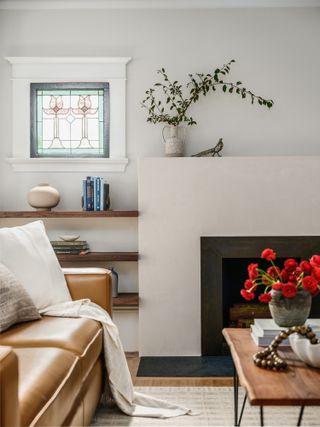
In a small or narrow living room, assess the room’s assets, and its potential and make those its focal point. So, if the room has lovely crown moldings, original painted tiles, or even large windows or stained glass, bring those into focus. This will take the attention away from the room's small dimensions and help focus on its true beauty.
'We highlighted the original stained glass windows by painting the sashes with a semi-gloss black,' says Denise Hall Montgomery, founder of DHM Architecture. 'The thin line of black frames the decorative glass as 'works of art' while light casework keeps the architectural detail from feeling top-heavy.'
6. Consider hidden storage

Have a small living room with a fireplace? Usually, the mantel and the wall above are used for decorating but consider this space for hidden storage. Hide within it the room's clutter like books, art, stationery, curios, or even pillows. Camouflage the storage with the artwork.
'This project is my own home, where we used paneling around the space and decided to hide a whole bookshelf inside the wall,' says Chris Dyson, founder of Chris Dyson Architects. 'When the storage door is shut, you are not aware that there's anything behind it. Plus, to the side of the fireplace are two storage cupboards that contain firewood. The home is an essay in clever carpentry and joinery.'
'In terms of hidden storage, the same idea can be implemented in furniture such as benches, coffee tables, and side tables by adding lift-up drawers, which in fact, are a big part of carpentry and joinery tradition.'
7. Scale up the lighting pieces
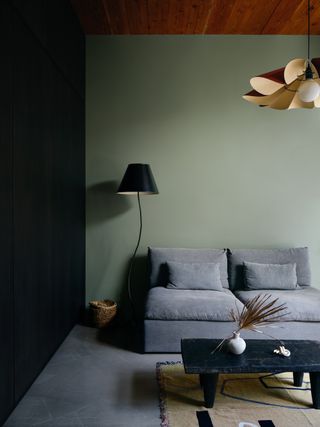
Small living room lighting pieces, as opposed to furniture, don't necessarily need to be tiny. This is a good opportunity to scale up! An oversized chandelier or a tall standing lamp will not only help cover larger ground in terms of illumination but will also add drama and personality to the room. If you've kept your room largely neutral, this might be a good time to even experiment with color with the lighting piece.
Ensure that you choose a warm light instead of a cool, to make the living room feel more cozy and welcoming.
'We like the juxtaposition of the various weights of the shapes and lines, while both pieces are echoing one another in their sculptural nature,' says Melissa Lee, founder of Bespoke Only.
8. Rethink the furniture layout
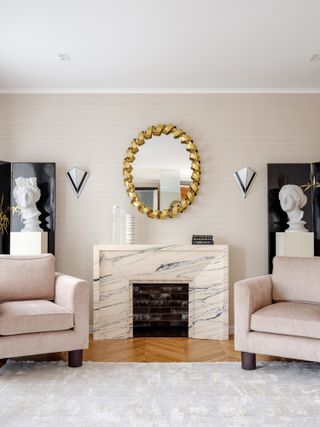
Limited space challenges you to think beyond conventional seating systems. Instead of concentrating all the seaters in the middle of the room, perhaps move them against the walls or towards the corners, leaving ample circulation room. Banquettes are efficient, and maximize space and conversations. You could go in for those instead of conventional sofas for your small living room layout.
You could also place sofas adjacent, or even back to back, so the periphery of the room is spacious. If possible, completely do away with a coffee table, and instead, choose side tables as those tiny tabletops to keep your mugs and trays. If you feel that is too less a storage space, bring in a nest of tables and stack them on top of each other.
9. Go low contrast
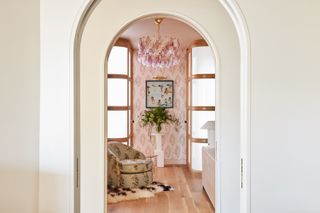
When it comes to small living room color ideas, it is best to go with lighter tones or pastel ones that reflect light and make the room feel spacious, open, and airy. Colors such as blush pink, soft yellow, light blue, and even beige are great tones to experiment with. If you go with a softer palette on your walls and ceiling, you could add one bold, pop of color.
But in reality, color isn't your concern, as much as contrast is. 'You can select any color regardless of the size of the space,' says Jane, 'what's more important is making sure the amount of contrast, or dark against light, surfaces are managed. High-contrast colors can make a room look smaller, so pick a focal point and make it the high-contrast element to stand out. Everything else should be less contrasting, blending, which will make the room feel more spacious.'
10. Add low seaters
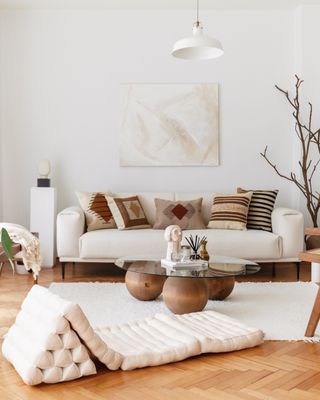
Close to the floor, low seaters are the new living room trend to make small spaces more welcoming, comfy, and relaxed. The advantage of choosing one is that it makes a room feel taller, with more depth. Also, low-level furniture can make an average room feel like it has double height and even feel grander.
This style is seen widely across Asian-style interiors, where floor seating is believed to even have health benefits, helping in better digestion and blood circulation.
Be The First To Know
The Livingetc newsletter is your shortcut to the now and the next in home design. Subscribe today to receive a stunning free 200-page book of the best homes from around the world.

Aditi Sharma Maheshwari started her career at The Address (The Times of India), a tabloid on interiors and art. She wrote profiles of Indian artists, designers, and architects, and covered inspiring houses and commercial properties. After four years, she moved to ELLE DECOR as a senior features writer, where she contributed to the magazine and website, and also worked alongside the events team on India Design ID — the brand’s 10-day, annual design show. She wrote across topics: from designer interviews, and house tours, to new product launches, shopping pages, and reviews. After three years, she was hired as the senior editor at Houzz. The website content focused on practical advice on decorating the home and making design feel more approachable. She created fresh series on budget buys, design hacks, and DIYs, all backed with expert advice. Equipped with sizable knowledge of the industry and with a good network, she moved to Architectural Digest (Conde Nast) as the digital editor. The publication's focus was on high-end design, and her content highlighted A-listers, starchitects, and high-concept products, all customized for an audience that loves and invests in luxury. After a two year stint, she moved to the UK, and was hired at Livingetc. Currently, as the design editor, her focus is on kitchens and bathrooms and she covers exciting before/after projects, writes expert pieces on decor, color, and occasionally reviews exciting travel destinations.
-
 Away Just Launched a 'The White Lotus' Collection That Will Immerse You in the Series' Paradisiac New Setting From Only $55
Away Just Launched a 'The White Lotus' Collection That Will Immerse You in the Series' Paradisiac New Setting From Only $55Inspired by the HBO phenomenon's anticipated third season, the collaboration packs the vibrancy of Thailand into nine lavish travel buys
By Gilda Bruno Published
-
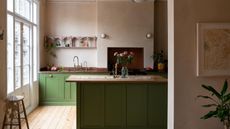 I'm Tempted by Wood Countertops for My Kitchen, But Are They Hard to Maintain?
I'm Tempted by Wood Countertops for My Kitchen, But Are They Hard to Maintain?Torn between stone and wooden kitchen countertops like I was? Well here's your answer to whether they're easy to care for, or not
By Faiza Saqib Published
